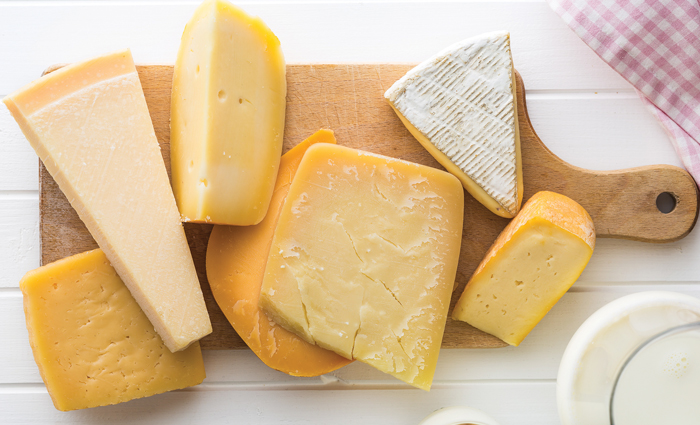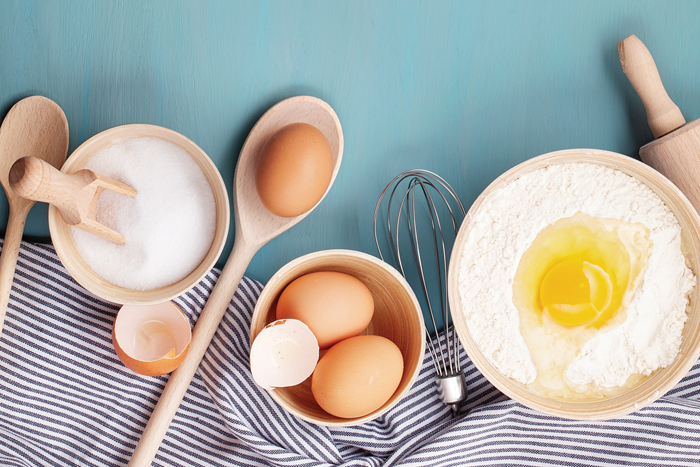Over the past five years, the all-food Consumer Price Index rose 5.5%, according to the USDA’s Economic Research Service, and the 2019 forecast puts the annual projected growth at a more modest 1.5 to 2.5%. That’s the good news. Still, there are important categories to watch, including dairy products (up 3 to 4%), bakery products (up 2.5 to 3.5%), and fresh vegetables (up 2.5 to 3.5%), according to ERS projections.
Food prices are less volatile than fuel prices, and transportation, packaging and other factors play a greater role in determining prices on retail shelves than farm commodity prices. For instance, in 2010, the production-weighted price of corn, wheat and soybeans rose by 33%, according to ERS, and yet food prices increased only 0.8%.
What is important to monitor is disposable personal income as it relates to food.
“Disposable personal income is going up. It is now a shade under $16,000 per capita in the United States,” points out Nancy Kruse, a foodservice analyst. “Historically, the indicator that is most positive for the foodservice industry is DPI. But we continue to be in a recessionary growth mode.”
Four of the five best years for restaurant growth in history have occurred since 2011. And yet the rate has tumbled to less than 3% now, and Kruse attributes this to a “whole complex” of factors, including stiff competition from supermarkets.
The supermarket opportunity
Retail bakeries face a tremendous opportunity to grow their businesses through the supermarket sector, which is experiencing an uptick in sales because of convenience factors.
By 4:30 p.m. on a typical day most U.S. consumers haven’t decided on their dinner meal yet, and that’s where in-store kits have filled the need. NPD reports that 59% of recent meal kit users are giving instore kits a try, and 57% of instore meal kit purchases are made on impulse.
“Clearly meal kits are meeting the consumer’s need for convenience, fresh, and as a meal solution, which bodes well for the future of meal kits,” says Darren Seifer, NPD food industry analyst.
Supermarkets appear to be winning the battle for share of stomach. A year ago, growth stalled for the top 500 restaurant chains in almost all market segments, particularly in casual dining, where revenues grew only .1% in 2017, according to a PricewaterhouseCoopers 2018 report.
“Most analysts are predicting flat to downward same restaurant sales (SRS) in the near term for major, established chains. Overall, we expect turbulent times for established restaurant operators over the next few years,” wrote authors Akshat Dubey, Claire Davies and Piyush Gupta in the PwC report, “How the U.S. restaurant industry is negotiating a challenging environment.”
Smaller chains are performing well overall and capturing a wider share of Americans’ growing “food away from home” spending, the authors wrote. “Consumer preferences continue to shift away from the meal consistency of large, established restaurant chains toward the authenticity and experiential dining concepts of small and innovative restaurants.”
Managing food costs

Profitable pricing strategies are different in the foodservice world. It requires a new way of thinking — you need to manage like you are running a restaurant.
According to the National Restaurant Association, making sure the price is right for each menu item is no game. Before adjusting your prices, consider the following factors:
Food costs
“You’ve got to know your costs before setting a price,” says restaurant consultant Linda Lipsky of Broomall, Pennsylvania. She recommends that food costs run about 33% of menu prices, on average. This can differ per operation, with fine dining restaurants typically posting higher food-cost percentages and casual pizzerias running lower percentages. The percentages also vary widely from item to item. “A soup could cost as little as 18 cents per serving to make, but you’re not going to sell it for 54 cents,” Lipsky says. Soups, appetizers, desserts and alcohol tend to have lower cost percentages than entrees, she notes. Consider your sales mix when pricing items.
Margins
Food-cost percentages are only part of the equation. “The biggest mistake I see operators make is that they rely too much on food-cost percentages and not enough on food-cost margins,” says Dennis Lombardi, president of Insight Dynamics LLC in Columbus, Ohio.
Additional costs
Don’t forget to factor in your labor costs. The cost of baking and decorating a chocolate cake in-house, rather than buying it premade, is more than just the price of the ingredients. Include the price of any giveaways, such as bread and olive oil, and the cost of food waste and spoilage.
Volatility
Food costs can change at a moment’s notice, based on anything from world politics to weather conditions. While large chains might sign contracts that lock in prices, smaller restaurants usually don’t have that option, Lombardi says. “Give yourself a cushion for volatile items,” he notes. Limit items, particularly those with volatile ingredients, to specials or seasonal dishes, he advises. Lipsky recommends printing your menu in-house, so you can easily reprint it if your costs suddenly soar. “If your menu looks the same, your guests probably won’t notice the price change,” she says.
Competitors’ prices
When was the last time you dined at a competing restaurant? If it’s been a while, you’re missing crucial information that can help you set your prices. Find out what your competition offers and their price points. Don’t look just at online menus, Lombardi urges. Go in person so you can see the portion sizes, the preparation, the presentation – all factors that impact the value perception.
Pricing strategies

Pricing products correctly starts with your cost to make them. Take a lesson from successful retail bakery owners who command much higher premiums from their products. Founder and owner Susan Sarich of SusieCakes, now with 24 locations in California and Texas, explains that her pricing philosophy is simple and effective: “I believe that quality is remembered long after price is forgotten,” she says. “We price according to the costs associated with operating our business.
By nature, scratch baking is extremely labor intensive and can be a more expensive operation to run than other bakery models. We offer a very fair price for a premium product, which allows us to appeal to a broad audience. Having a wide variety of decoration options also allows us to appropriately charge for the amount of time that goes into our hand-decorated, custom designs.”
Profitable bakeries and bakery cafes tend to keep food costs between 28 and 35%. This is an estimate and can vary depending on the types of products your bakery sells. But it is a great starting point to use as an effective measuring stick.
Start with a defined time period over which you are going to calculate food costs, say 28 days. Include all food and beverage expenses in your percentage.
Don’t forget to factor in the cost of your inventory. Calculate your inventory adjustment for each 28-day period by recording your beginning inventory (in dollars) and ending inventory. Subtract your ending inventory from beginning and add that number to total purchases. This is your total cost of food sales. Divide this number into total sales for the 28-day period to compute your food costs.
Once you have figured out cost, you can begin to set up your pricing structure. Managing customer expectations is crucial to success. Social media and the internet have opened the floodgates for consumers shopping around for signature products and looking for bargain prices. It behooves you to get a handle on the staff time you spend on everything from quoting cake prices via email to decorating elaborate specialty cakes.
“Identify the time wasters in your bakery,” says Beth Fahey, owner of Creative Cakes in Tinley Park, Illinois. “Establish ahead of time what you will and won’t do.”
One of the most useful practices she recommends is observing your staff through a time study. Knowing how long each task requires – from responding to emails to decorating an animal print cake – will go a long way toward helping you maintain profitability in business. One decorated cake example: $55.99 in ingredients, $146.23 in direct labor and $122.40 in overhead contribution. This adds up to a total direct cost of $324.62.
“When you get to a high-end cake, it costs a lot of money to produce it, so you have to charge accordingly,” Fahey says. “Once you do a time study on certain things, it’s going to open your eyes.”
